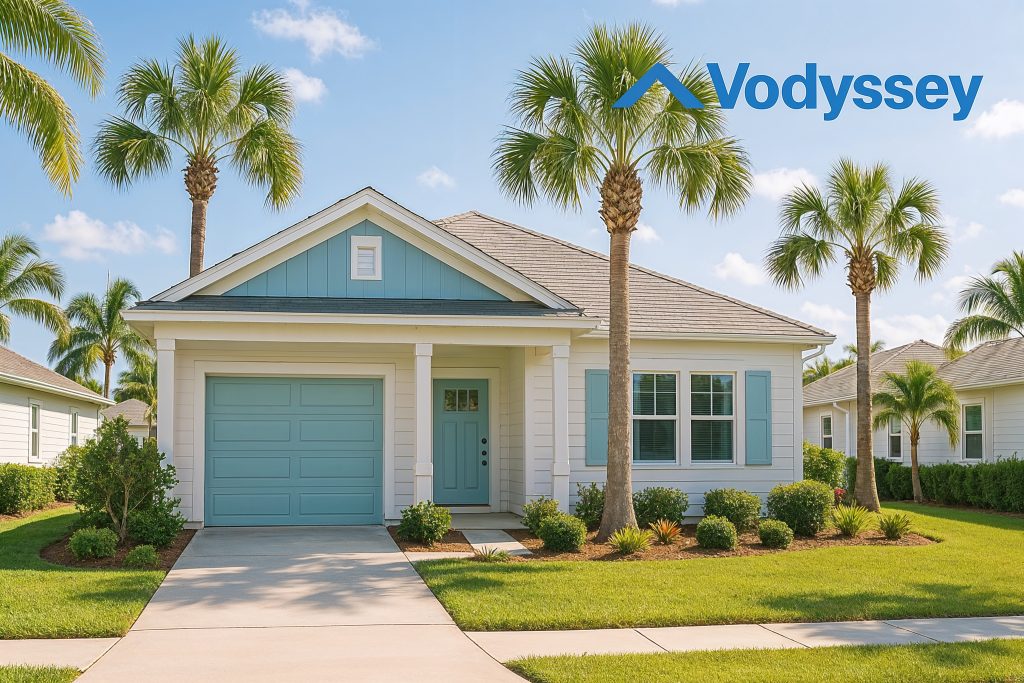STR Case Study Florida: How to Succeed with Short-Term Rentals in the Sunshine State

When it comes to short-term rentals (STRs), Florida consistently stands out as one of the most desirable and lucrative markets. Its year-round sunshine, world-renowned attractions, and diverse visitor base create an environment where vacation properties can thrive. But what truly sets a Florida STR apart, and how can you make your investment a top performer? In this case study, we’ll break down proven strategies, essential pitfalls to avoid, and actionable insights drawn from real investor experiences and Vodyssey’s market analysis.
Why Florida for Short-Term Rentals?
Florida is a magnet for travelers from around the globe, offering beaches, theme parks, natural wonders, and a climate that supports tourism in every season. Locations like Orlando, Tampa Bay, Destin, and the Gulf Coast are perennial favorites for guests seeking both adventure and relaxation. This constant demand makes the Florida STR market exceptionally resilient.
But with opportunity comes competition. Standing out and succeeding in the Florida STR market requires a strategic approach—one that balances guest experience, realistic underwriting, and dynamic market factors.
Analyzing Florida’s STR Numbers: A Real-World Look
Let’s consider a focused market within Florida: Gainesville. According to Vodyssey’s Fall Top Markets Report, the average home price for a 3-bedroom in Gainesville hovers around $350,000. This mid-tier price point offers accessibility for many investors. Here’s how the numbers break down for an upscale STR:
- Projected Gross Revenue: Up to $50,104 per year
- Average Nightly Rate (ANR): $276.41 for upscale properties
- Average Occupancy: Approaching 50%
These figures show that with the right property and management, an investor can achieve strong cash flow and robust returns. This holds true for many Florida markets, from vibrant college towns to coastal escapes. However, your results will always depend on accurate underwriting and a clear strategy.
Case Study: The Impact of Realistic Underwriting
One of the most common pitfalls new investors face in Florida is underestimating operational costs, especially insurance. For example, in Seminole, a beachside suburb south of Clearwater, a common mistake is budgeting only $75 per month ($900 per year) for homeowners insurance. In reality, Florida’s unique climate risks and STR-specific requirements can push insurance costs to $5,000 or more annually. Underwriting based on artificially low costs can destroy your bottom line and turn a promising property into a disappointment.
Shawn Moore, Vodyssey’s founder, emphasizes thorough analysis: “You better understand how to dial in realistic underwriting—not just what looks good on the front end. Dive into the details, or you’ll be calling us later saying, ‘This doesn’t work!’”
What Makes a Florida STR Stand Out?
Beyond the numbers, success in Florida’s STR market relies on creating an experience that appeals to the 80% majority of guests. Most visitors seek comfort, convenience, and a memorable setting—not over-the-top extravagance. Properties that reflect thoughtful design, local flavor, and consistent quality attract more bookings and command higher nightly rates.
- Photography is a Superpower: Listings with bright, inviting, and story-driven photos outperform generic, monochromatic offerings. Small touches—a themed kids’ room, pops of color, or local artwork—can make a property both special and affordable.
- Consistency in Guest Experience: Repeat themes, quality linens, and amenities like fast WiFi and smart TVs raise expectations and satisfaction. Properties that consistently deliver on guest promises earn better reviews and more repeat bookings.
The Role of Technology and Rate Optimization
Modern STR success in Florida is powered by dynamic pricing tools that adjust nightly rates based on demand, events, and seasonality. Whether it’s spring break, college football weekends, or a major festival, smart rate adjustments can double or triple your nightly earnings during peak times. Don’t leave this money on the table by using set-and-forget pricing strategies.
Florida STR Case Study: Keys to Sustainable Success
Successful Vodyssey members in Florida share the following actionable steps:
- Focus on Underwriting Accuracy: Thoroughly research insurance, taxes, management, and maintenance costs. Consult local experts and avoid relying on out-of-date or overly optimistic pro formas.
- Design for Demand: Cater to the needs and excitement triggers of your main guest demographic. In Florida, this often means families, retirees, and groups visiting for events or vacations. Stand out with smart design choices and local touches.
- Leverage Technology: Use property management software and dynamic pricing tools to maximize occupancy and revenue. Automate where possible, but always keep a personal touch.
- Stay Compliant: Understand local STR regulations, licensing requirements, and HOA rules. Florida’s STR landscape can change quickly, and compliance is essential for long-term profitability.
Lessons Learned and Final Thoughts
Florida’s short-term rental market is filled with opportunity, but it rewards those who do their homework. Success isn’t about finding a magical property—it’s about disciplined analysis, targeted design, and consistent execution. The most profitable STRs aren’t always the most expensive or luxurious; they’re the ones that deliver what guests really want, backed by realistic financial planning and great management.
Ready to start your own Florida STR success story? Schedule a call with our team and let Vodyssey show you how to turn a property into a true lifestyle and financial asset.
